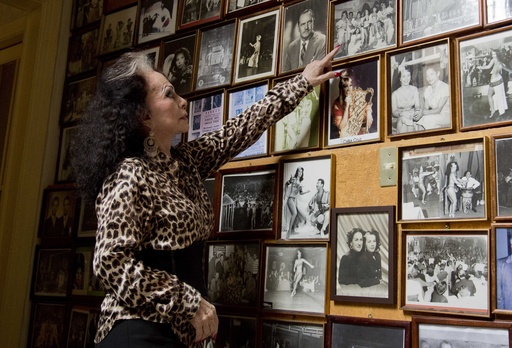MEXICO CITY — The beloved American dancer Tongolele, a transformative figure in the nightlife of mid-20th century Mexico City known for her captivating hip movements to lively drum beats, has passed away at the age of 93.
The news of her death was confirmed by Mexico’s secretary of culture, who shared the announcement on social media. “Her stage presence and unique style made her a benchmark of entertainment in Mexico. Rest in peace,” they stated, with multiple media reports indicating that she had died on Sunday evening.
With her striking beauty characterized by a tuft of white hair and alluring feline eyes that shifted colors from blue to green to violet, Tongolele boasted a commanding presence. Although her daring performance style faced early criticism from the public, her exuberant personality fostered connections with prominent figures, including former Mexican presidents and legendary artists and writers of her time.
Reflecting on her journey, she mentioned in a 2014 interview, “I never thought, ‘I want to be famous.’ I just wanted to dance. I didn’t even realize that I was a star of the show; I didn’t even know I was successful. I was just happy dancing.”
Tongolele, born Yolanda Ivonne Montes Farrington on January 3, 1932, in Spokane, Washington, embarked on her dance career at just 15 years old. By mere months later, she was performing in theaters across Mexico, from Tijuana to Mérida, where she was encouraged by a female boss to adopt a stage name. The name Tongolele was chosen, drawing inspiration from African and Tahitian cultural influences.
Her rise to fame came as she headlined some of Mexico City’s most prestigious theaters, eventually leading her to star in films like “Mátenme porque me muero,” “Amor de locura,” and “Han matado a Tongolele,” a film aptly named in her honor.
In recognition of her artistic achievements and for dedicating six decades to the stage, Tongolele was awarded the prestigious Agustín Lara award in 2012.
Her impact on the entertainment landscape remains significant, marking her as a celebrated figure in the rich tapestry of Mexico’s cultural history.




